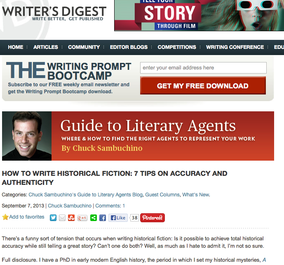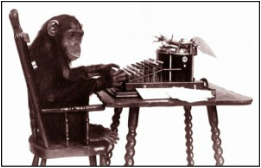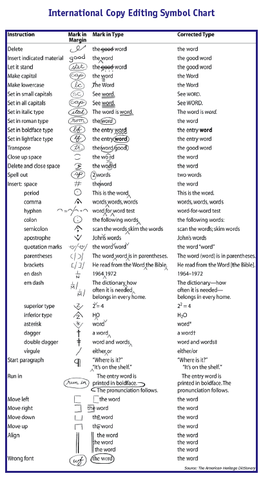Guest Post in Writer's Digest: Balancing authenticity and accuracy while writing historical fiction9/8/2013  My post in WD appeared Sept 6, 2013 My post in WD appeared Sept 6, 2013 A few years ago, when I was first trying to figure out how to get my debut novel A Murder at Rosamund's Gate published, I came across Writer's Digest. Full of advice for the fledgling writer and published author alike, Writer's Digest gave me some great insights into what I needed to do to polish my manuscript and write a compelling cover letter. (I mean, tell me it's not important to know "How to see your work through an agent or publisher's eyes?" or, "Knowing when to stop: Expectations for a satisfying ending.") So I really appreciated the opportunity to write a guest post, "How to write historical fiction: 7 tips on accuracy and authenticity" for Writer's Digest. In this post, I talk about the tensions I've experienced as a historian-turned-novelist, while writing historical fiction. I also try to offer a few strategies that have worked for me in reconciling these tensions. Check it out! And while you're there, try out the daily writing prompt! Although I have to giggle, because today the prompt is: "You are a local news reporter for a failing network. Your boss tells you to ramp up the news by getting “creative” and constructing your own stories. What’s the first fake news story you create and broadcast on air?" Fake News! Totally fun! Accuracy Shmackeracy! If you do take up the challenge, will you post it here too? I'd love to see it!
3 Comments
I posted this a few days ago, but I realized there's one more important thing to remember!!!  Tonight I am going to do something I haven't done since I was in grad school. I am going to get a pair of scissors and physically cut up the first two chapters of my current work-in-progress (WIP). Sure, I know about the cut-and-paste function in Word. Sure, I've heard of outlines. This extreme method of cutting probably seems crazy. But I have to say, it is easiest way I know to physically see all the redundancies, missing passages, dangling storylines, etc. that can really plague a manuscript. Plus, it's fun. And somewhat cathartic. Most importantly, it lets the WIP know who's boss. From experience, though, I've learned a few things... 1. Don't cut more than 20 pages at a time. More that then, then you'll just end up weeping in a corner, looking at the little scraps of paper all over the living room floor. Which leads me to point two. 2. Don't try this on your desk or at the kitchen table. You'll never have enough room to see all the scraps at once. You'll need an entire floor to work on. Which leads me to point three. 3. Choose a floor where the cat won't roll around. Nearly impossible in my house. But I have a solution to this problem. Lay out an empty box next to your scraps. Your cat will stay in the box. 4. Number as you go. Personally, I use elaborate coding schemes, numbering my paragraphs in the order they go. 1A, 1B, insert 2D here, put 1/2 of 17 here, and last half of 13 here. But sometimes I forget my ordering system. So, 4a. Don't forget your coding scheme. 5. Don't forget the tape!!! The best part of this process is taping together your newly structured WIP. You'll feel really invigorated and happy, I promise. But this brings me to point six. 6. Pour yourself a nice glass of wine. No, not to celebrate. That comes later. But rather to ease the inevitable shrieking and tearing of hair that will occur when you realize that you have to sit down at the computer and make all these tedious changes. 7. Promise yourself that next time, really, you will write in a more orderly way. If not, it's on to chapter 3 and step one above. But I'm curious! Has anyone else done this old school cutting and pasting? Do you find it works? Or am I raving bonking mad? ••••••••••••••••••••••••••••••••••••••••••••••••••••••••••••••••••••••••••••••••••••••••••••••••••• And now my addendum...
8. Don't double-side when you print! Like I did. Boo!!! Sort of defeats the whole purpose.  Maybe the trick is to think like a monkey? So I'm thinking about starting a new novel, since I'm still in the revision phase of From the Charred Remains. Even though I'm super excited to start book 3 in my Lucy Campion series, it could be problematic to do so. Especially if my beta readers or my editors tell me I need to rewrite the ending of book 2. That hasn't happened, but who knows? So here are the questions I'm pondering as I procrastinate, er, reflect on this new novel. Most are questions I wished I had asked myself--but of course, didn't--when I began my other novels. There's a bit of choose-your-own adventure quality to this novel-writing business, I find. 1. Do I have an idea that can be developed over 85,000 words? Do I want to spend years with this idea, draft after draft? If yes, I'll continue. If I don't, then I'll stop now. If its not compelling enough to me, than why bother? 2. Where am I going to set this story? Since I like to set my stories in the past, I've been spending some time mulling over backdrop and scenery. While I expect to research details, I find it easier to frame my novel during a time period for which I already have a basic understanding of larger political, social, economic and gender developments and trends. Paging through history texts help me envision specific aspects of the setting. However, I do of course need to find ways to make the "real" world my own. 3. Do I have a point-of-view character? Is this a character I enjoy writing about? Have I thought about what motivates, scares, excites, infuriates this character? Where does this character fit--or not fit--into society? Do I have a sense of her voice? Do I have the image of this character in my mind? Only after I get a semblance of the main character do I feel I can move on. (Here's where I cheat. I usually find a celebrity who looks something like the character I have in my mind; this helps me remember what I think this person is supposed to look like). 4. Do I have a main problem at the heart of my story? If it's a mystery, that's easy. Whodunnit? But I'm writing a different kind of story this time, so I need to think through the central problem. Until I've worked out why this is even a problem, I find I can't proceed effectively. 5. Do I have a general sense of what the other characters want in life? What kinds of quests, problems, motivations do they possess? Are the goals of my minor characters aligned with--or at odds with--those of my point-of-view character? I do figure this out along the way but I find it helpful to have some starting ideas. 6. Do I have a sense of the ending, and perhaps more importantly, a sense of the middle? I think most writers--and perhaps most readers--would agree sagging middles can really ruin a novel. So I like to think through the middle a bit before I start floundering. I've been in that morass before, and I don't like it. Jump in with a line to the other end, is how I like to think about it! (Yet, I've messed this up twice. Note to self: IN MYSTERIES, FIGURE OUT WHO THE KILLER IS BEFORE STARTING WRITING!). 7. And one last question...How will I ever string together another 85,000 words in a meaningful way? (There's a related question here: Why am I doing this crazy thing?) While I've thought about hiring 1000 monkeys to type for a 1000 years, I'm going to try the best approach I know: After figuring out the shape of my story, I will just take one scene at a time. If necessary, one paragraph at a time. And if really necessary, I will just-peck-one-word-at-a-time-until-the-first-draft-is-done. And that's it! What about you? What questions would you (do you) ask, when you sit down to create a new novel from scratch? And how many bananas will you need to feed the monkeys?  this MEANS something! After working through the copy edits of my first novel--A Murder at Rosamund's Gate--I must say, I really learned a few things. First, copy editors are amazing. Really. All this chicken scratch to the left actually means something important to the copy editing process. Delete! Insert! Move up! Move down! and my favorite, "AU," which is short for "Author, what the heck could you possibly mean by this passage?" I'm used to marking up student papers, but only the first few pages.So I was shocked--and frankly, a bit chagrined--to see that my entire manuscript was marked up from beginning to end, with characters and symbols I didn't recognize. (Thankfully, copy editors don't seem to share my grading philosophy: "Make 'em fix it themselves!") But I'm deeply grateful for her enormous help, and cognizant of how fortunate I am. Second, apparently, I don't use commas correctly. Nearly all my commas were eliminated in the editing process. This surprised me. Purdue's famous Online Writing Laboratory tells us there are 15 rules concerning the use of commas. Having had to memorize these rules as a grad student, I'd been reasonably confident in my ability to render a comma correctly. Yet, as I've learned, few of these comma rules hold true in fiction writing. Why such a marked difference in style? I suppose in fiction, the goal is to keep readers breathless, which won't happen if they have to stop at every comma speed bump. So my takeaway? Commas be damned!  those verbal tics are insidious! Third, I learned I have some terrible writing tics. Okay, I know the words "But," "However," "Yet," and "Actually" are not as disgusting as the tick pictured here, but they're equally insidious--crawling through my manuscript, clinging to my sentences-- refusing to be combed away under even the closest of scrutiny. Disgusting, I tell you! Disgusting! And so so SO hard to exterminate! See how many I've used in this post alone? But being aware of them is half the battle, right?  I don't edit with scissors anymore! Fourth, and more significantly, I also learned that continuity errors are extremely easy to make in the revising process. I can't remember if I've talked about this already but let me just say: Continuity errors are extremely easy to make in the revising process. (Ha! you see what I did there?) Seriously, I've discovered this problem the hard way. After I chopped out 10,000 words from the beginning and pushed the novel timeline back six months, I made some mistakes. These continuity errors also occurred, I think, when I cut a few minor characters (and reassigned their actions to other characters). Unless a writer is meticulous, which frankly I'm not, it's easy to make mistakes. This leads me to the fifth thing I learned: The spreadsheet is my friend! I'd heard writers talk about their "Bibles" (Nathan Bransford calls his the "Series Bible"), which contain all their character descriptions and quirks, key points, timelines etc. Never mind the term is a complete misnomer, the idea is sound. Systematically keeping track of stuff in a spreadsheet seems to be a particularly good idea now that I'm working on my second novel. This might give my Vice-President for Continuity Management (aka my alpha reader) a reprieve as well. And the sixth, more serious, point: As much as I think I've scrutinized my manuscript for historical inaccuracies, they seeped in anyway. "The Fire of London," my copy editor politely informed me, "began on September 2, which was a Sunday morning, not a Monday morning." No! this couldn't be true! She must not have understood how the Julian calendar worked. Ten days off the Gregorian calendar, beginning on March 26, blah blah blah I've talked about this before. Bottom line: there was no way I had it wrong. Confidently, I opened up my trusty historical date calculator, blithely went to September 2, 1666 and --Egads!-- found that the great calamity of London had indeed begun in the wee hours of a Sunday morning. I know my cheeks were a furious shade of red as I scrambled to reframe one of the most important scenes in my novel. It was hard work I wasn't expecting at this point, but I'm so grateful these errors were caught in the end.  shaping a novel--farrier style Which leads me to my seventh, most important, most nerve-wracking realization. The copy editing process means my novel--ten years in the making--is almost ready for the world! I'm no longer shaping this malleable object, hammering it, re-firing it, working it just so. It's almost ready! But the big question is...Am I? Murder at Rosamund's Gate |
Susanna CalkinsHistorian. Mystery writer. Researcher. Teacher. Occasional blogger. Categories
All
Archives
May 2023
|
 RSS Feed
RSS Feed